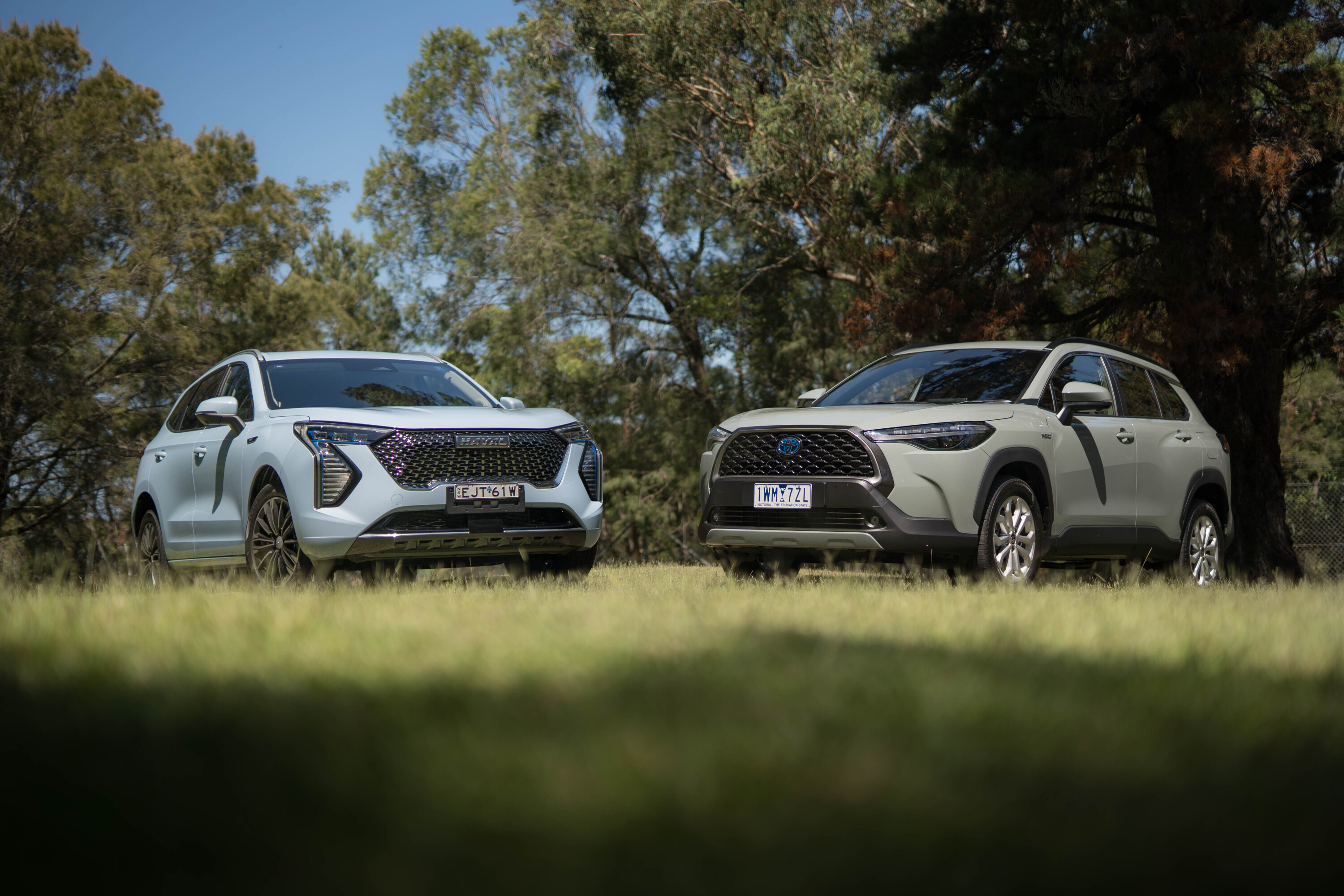
Things we like
- COROLLA CROSS: Supple ride, efficient hybrid, great steering
- JOLION: Low price, spacious rear seat, exciting cabin design
Not so much
- COROLLA CROSS: Cheap cabin materials, expensive, average back seat
- JOLION: Convoluted infotainment, mushy brake pedal, driving position
History repeats itself, and history is happening faster than ever before. What took Japan 40 years and Korea 20 years, China’s looking to do in a 10-15 year span – or so they say. Frightening times to be an established manufacturer like Toyota.
To test this theory, we grabbed two fresh-faced small SUVs with hybrid powertrains for a duel: Toyota’s now-benchmark Corolla Cross in GXL AWD guise, and our Haval Jolion Ultra Hybrid long-termer.
Toyota established itself as the hybrid hero when the Prius debuted in August 1997, and has continued to refine its series-parallel recipe to this day. It was widely accepted as the industry benchmark for seamless operation (and still is for efficiency) but recently, rival brands have begun to challenge all that.
Haval is one of them, with the Jolion featuring a different take on the hybrid with its ‘dedicated hybrid transmission’ (DHT) that uses two fixed ratios (a launch and cruise gear), with the electric motor working to fill in the gaps.
Toyota’s ‘eCVT’ is a similar system in principle, but with different electronic control systems, it differs markedly on the road.
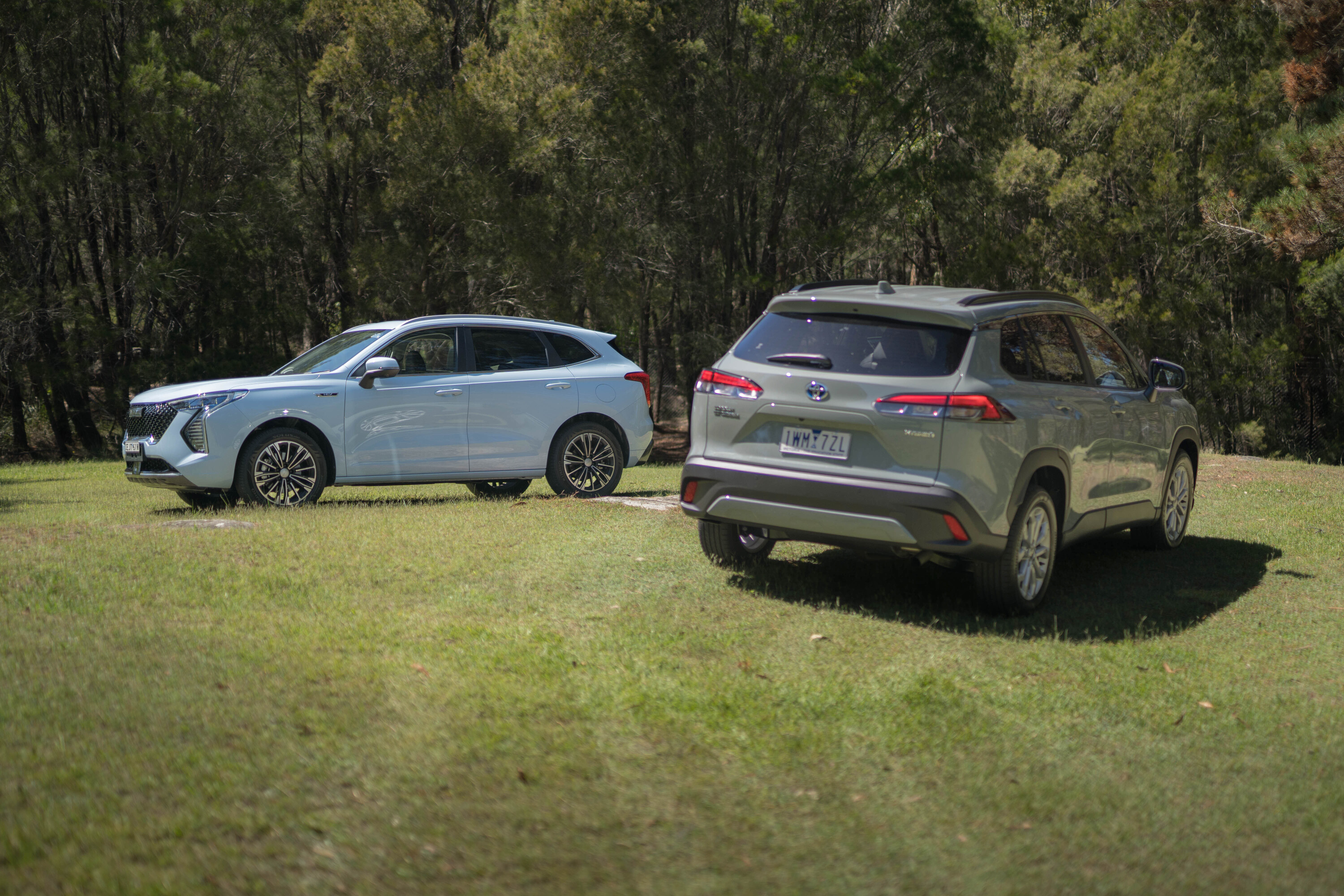
JUMP AHEAD
- Pricing and features
- The basics
- Comfort and space
- On the road
- Safety
- Fuel consumption
- Ownership
- VERDICT
- Specifications
Pricing and features
The Jolion immediately takes the lead in value stakes.
Haval sells the Jolion Premium with a punchy turbo-petrol engine, 17-inch alloys and 10.25-inch touchscreen from as low as $27,990 drive-away, and our flagship Ultra Hybrid is a still-reasonable $39,990 on the road in any state.
For the flagship’s asking price, you get the biggest-in-class (equalled by the Nissan Qashqai) 12.3-inch touchscreen, Comfort-Tek vinyl upholstery, and more (see table for full specifications). What you don’t get is independent rear suspension – that’s only available on the sporty Jolion S.
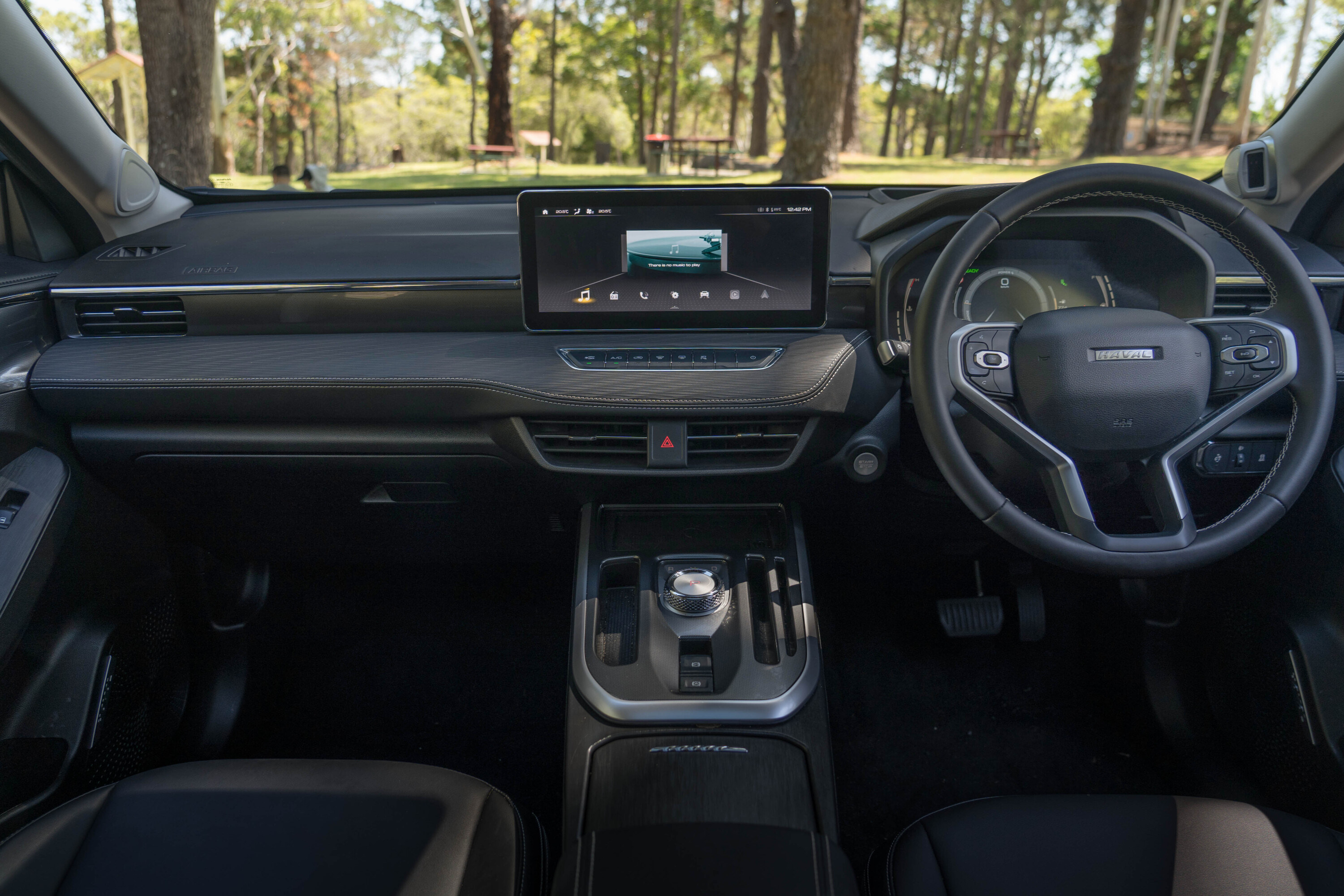
Comparatively, the Corolla Cross range begins in basic GX guise with 16-inch alloy and a small 8.0-inch touchscreen for $33,000 before on-road costs, or $36,800 drive-away – $9000 more than the Haval.
The mid-spec GXL hybrid AWD tested is rather dear at about $46,500 on the road, costing $5500 more than the Haval and isn’t even the top trim level. Oh, and you have to pay a monthly subscription for Toyota’s telematics and connected services. It totals $22.45/month.
See the spec comparison for how the Corolla Cross GXL stacks up against the Jolion Ultra Hybrid.
On price alone, the torsion-beam-equipped GXL FWD, roughly $43,300 on the road, would have been a better match, but none were available for this comparison.
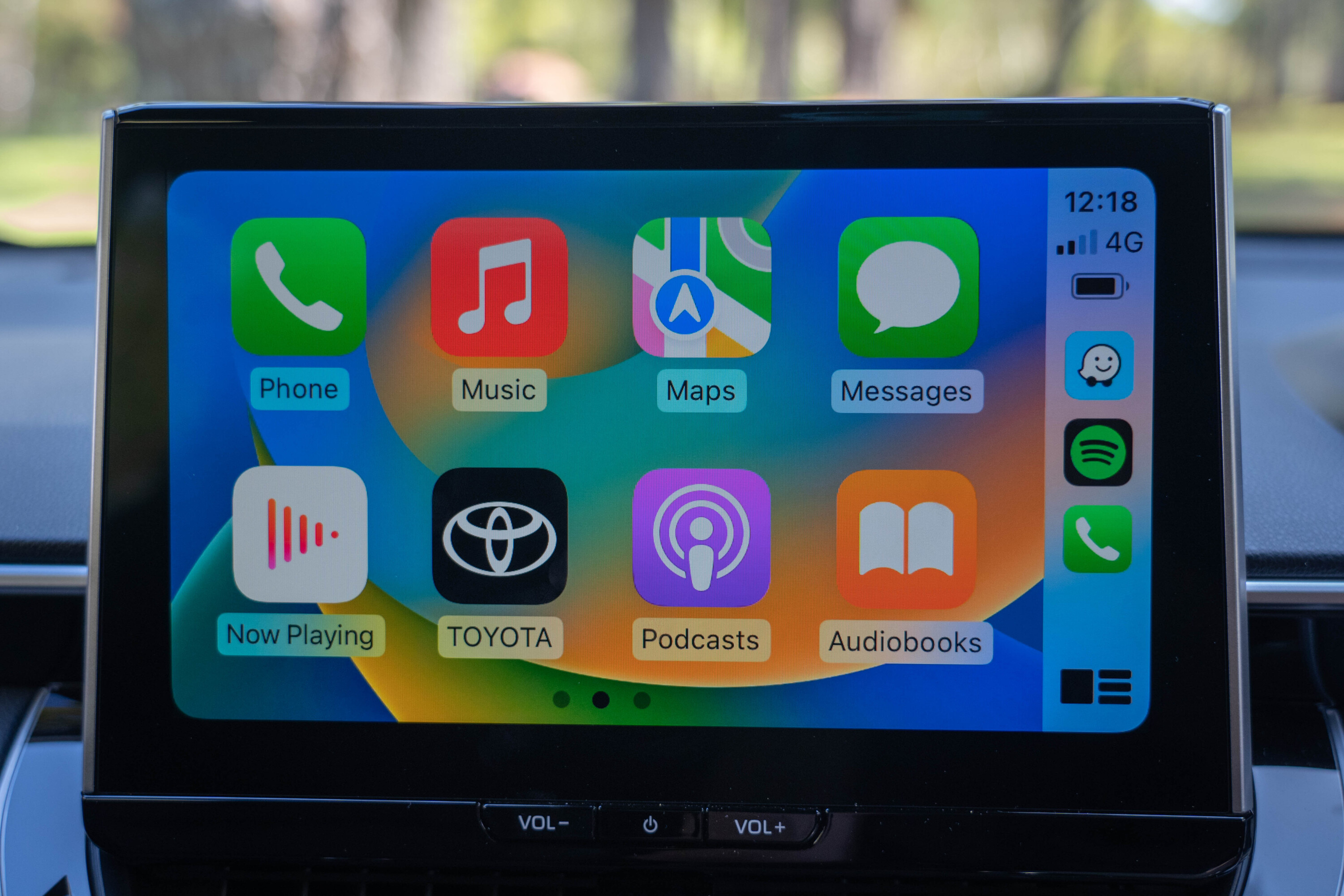
The basics
| Toyota Corolla Cross GXL AWD | Haval Jolion Ultra Hybrid | |
|---|---|---|
| Power | 146kW | 139kW |
| Torque | NA | 375Nm |
| Drive | AWD | FWD |
| Wheel size | 17-inch alloy | 18-inch alloy |
| Headlights | LED headlights | LED headlights |
| Sunroof | Not available | Opening panoramic |
| Touchscreen size | 10.5-inch | 12.3-inch |
| Smartphone mirroring | Wireless Apple CarPlay/Android Auto | Wired Apple CarPlay/Android Auto’ |
| Driving information | 7.0-inch digital multi-information display | 7.0-inch digital driver’s display |
| Sound system | 6-speaker in-house | 6-speaker in-house |
| Upholstery | Cloth/vinyl | u2018Comfort-Tek’ vinyl |
| Seat adjust | Manual with power-lumbar | 6-way power adjust |
| Climate control | Dual-zone climate control | Dual-zone climate control |
| Tailgate | Manual tailgate | Power tailgate |
| Boot size | 390L | 390L |
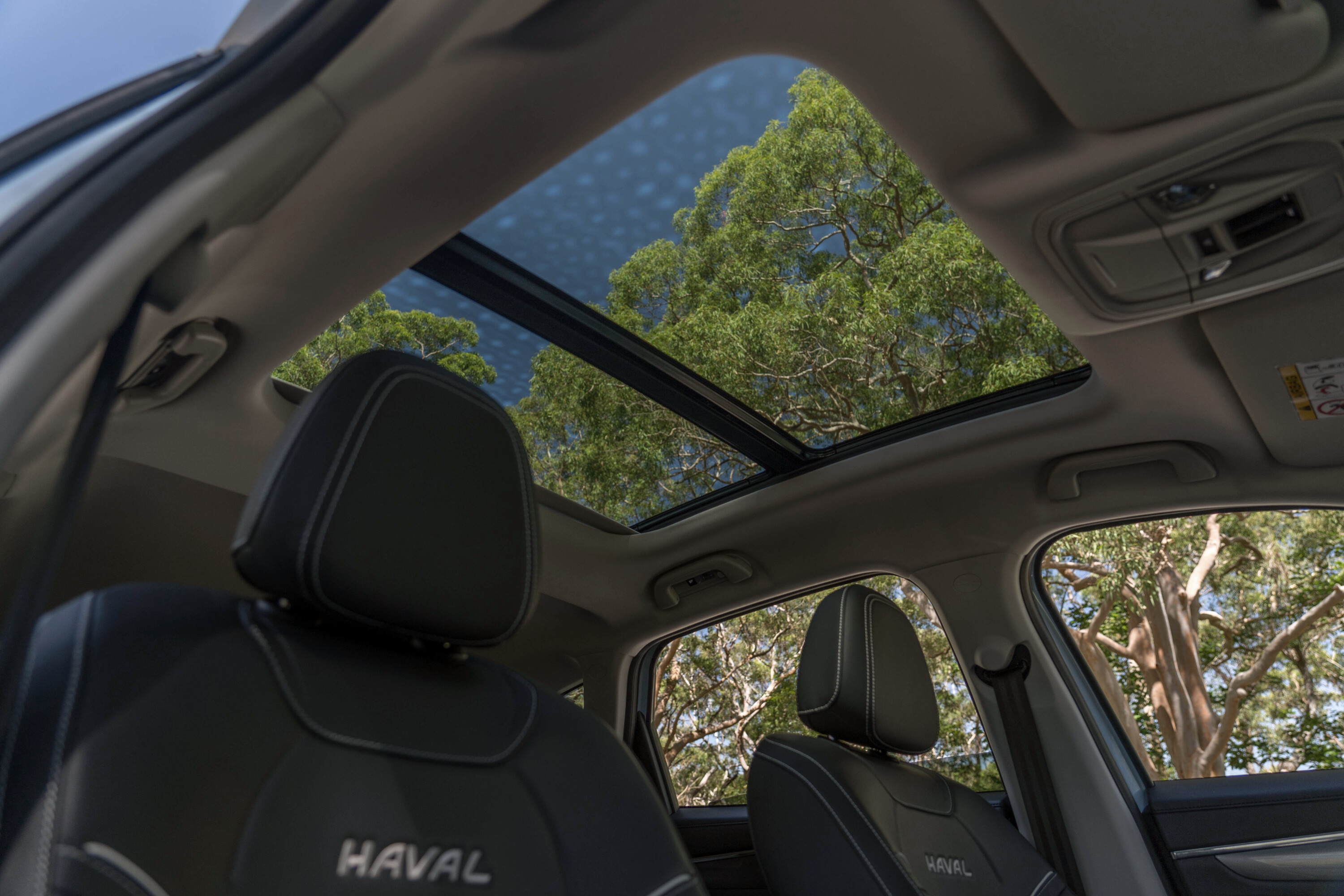
Comfort and space
The Jolion continues to win the cabin presentation race – though no prizes for guessing from which British luxury brand Haval pinched its interior stylist.
Where the Corolla Cross is all dull black plastics, the Haval has a lot of different materials and some interesting design choices. It’s not particularly cohesive or attractive (in this tester’s opinion) but it is more eye-catching.
Incidental storage in the Jolion is great, with credit card slots, a thoughtful wireless phone charging tray, two cup holders ahead of the rotary gearshift (which oddly doesn’t have any detents, it’ll just spin forever like a BMW iDrive controller), deep covered central storage bin and decent bottle holders in the doors.
Build quality is a bit of a letdown in the Jolion, with creaky plastics and a touchscreen that doesn’t feel particularly well attached to the dashboard. And although the materials present well, a bit more exploring reveals that they’re rather flimsy and cheap – especially the metal-look accents.
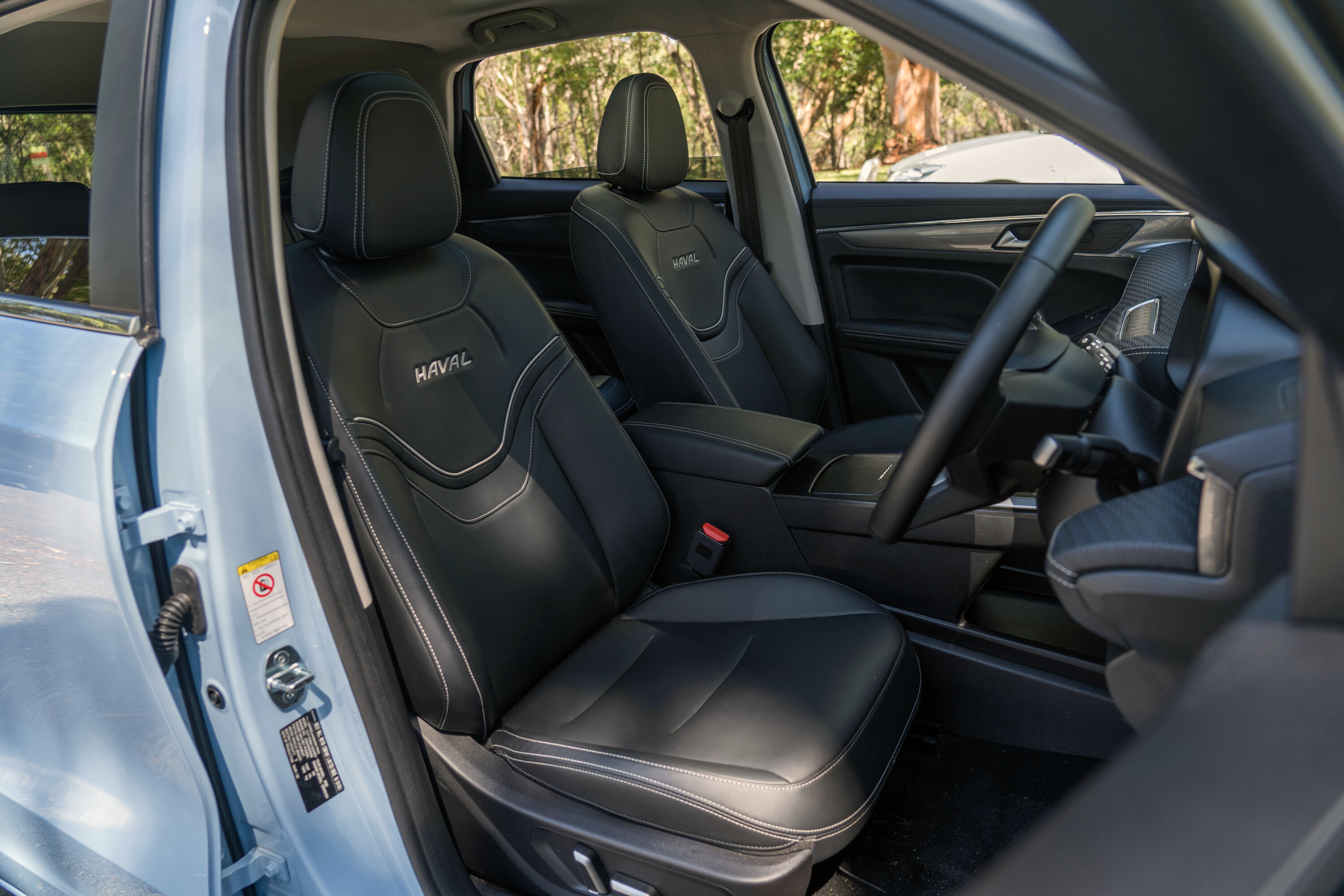
Another chink in the Haval’s armour is its driving position.
The Jolion is one of very few cars on sale (including the LandCruiser 70 Series) without telescopic adjustment for the steering wheel, and it’s positioned way too far from the driver. I had a sore back after an hour of driving because of this.
Taller people will also find that the seats seriously lack under-thigh support, that vinyl upholstery also proving very sweaty with sunlight beating through the panoramic sunroof. Although the Toyota’s manual seat adjustment is coarse (especially the backrest), the driving position is more conventional with a nice small wheel to hold.
Herringbone-esque cloth-centred seat in the Corolla Cross GXL also don’t get as hot, so there’s less yucky leg sweat to worry about in summer.
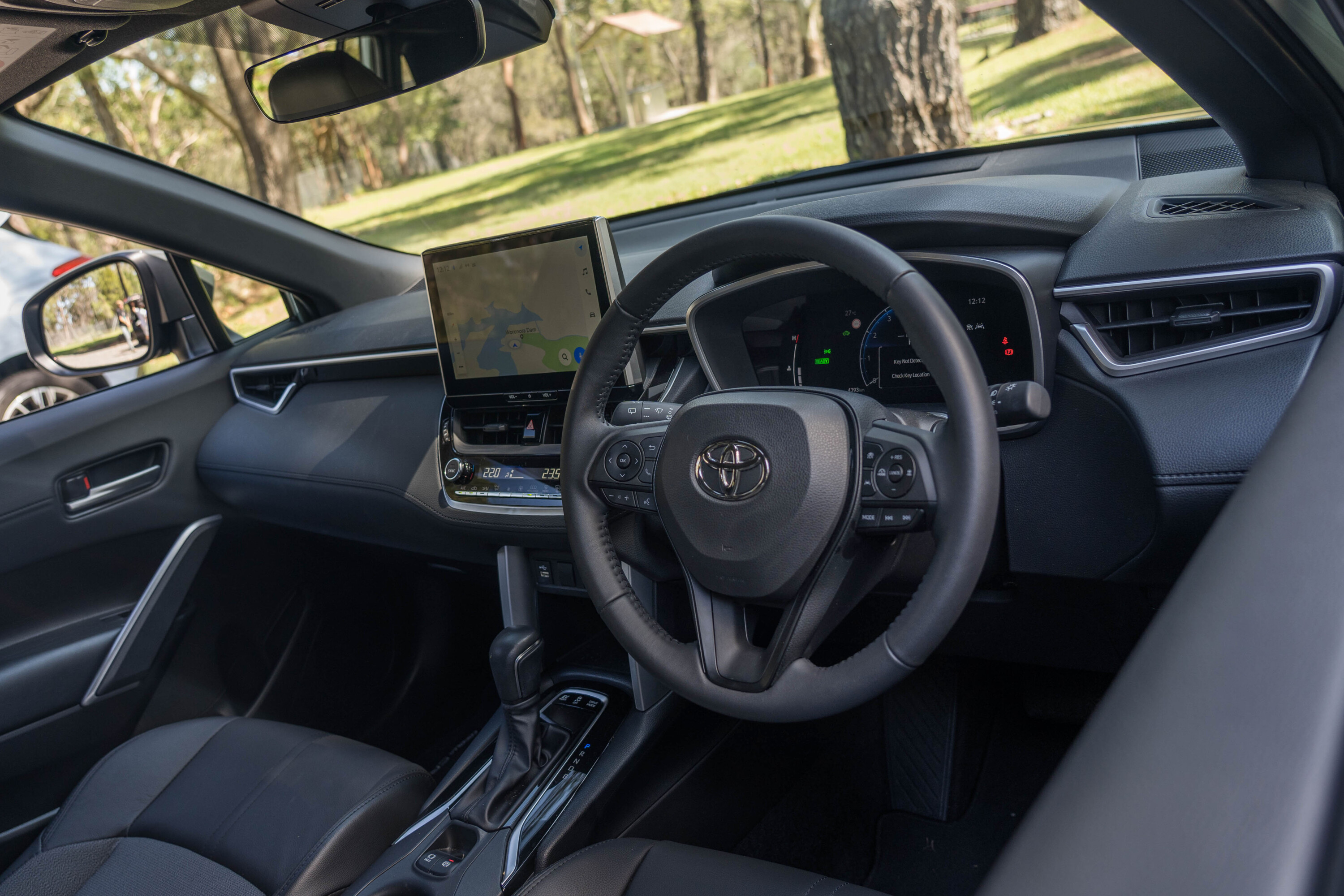
Next to the Haval’s wild interior, the Toyota’s cabin is conventional verging on forgettable.
The touchscreen is decently sized, but when you aren’t running wireless smartphone mirroring, the Corolla’s interface is bare. It’s slow to boot up as well, sometimes taking 20 seconds before becoming responsive.
To be fair to the Corolla, while its user interface isn’t sexy, it’s easier to navigate than the Jolion’s convoluted affair.
Even with Haval’s high-res screens, what’s really frustrating are the Jolion’s climate control and drive mode settings. Both are buried in strange places and though you can add main menu shortcuts, the interface remains clunky and unrefined.
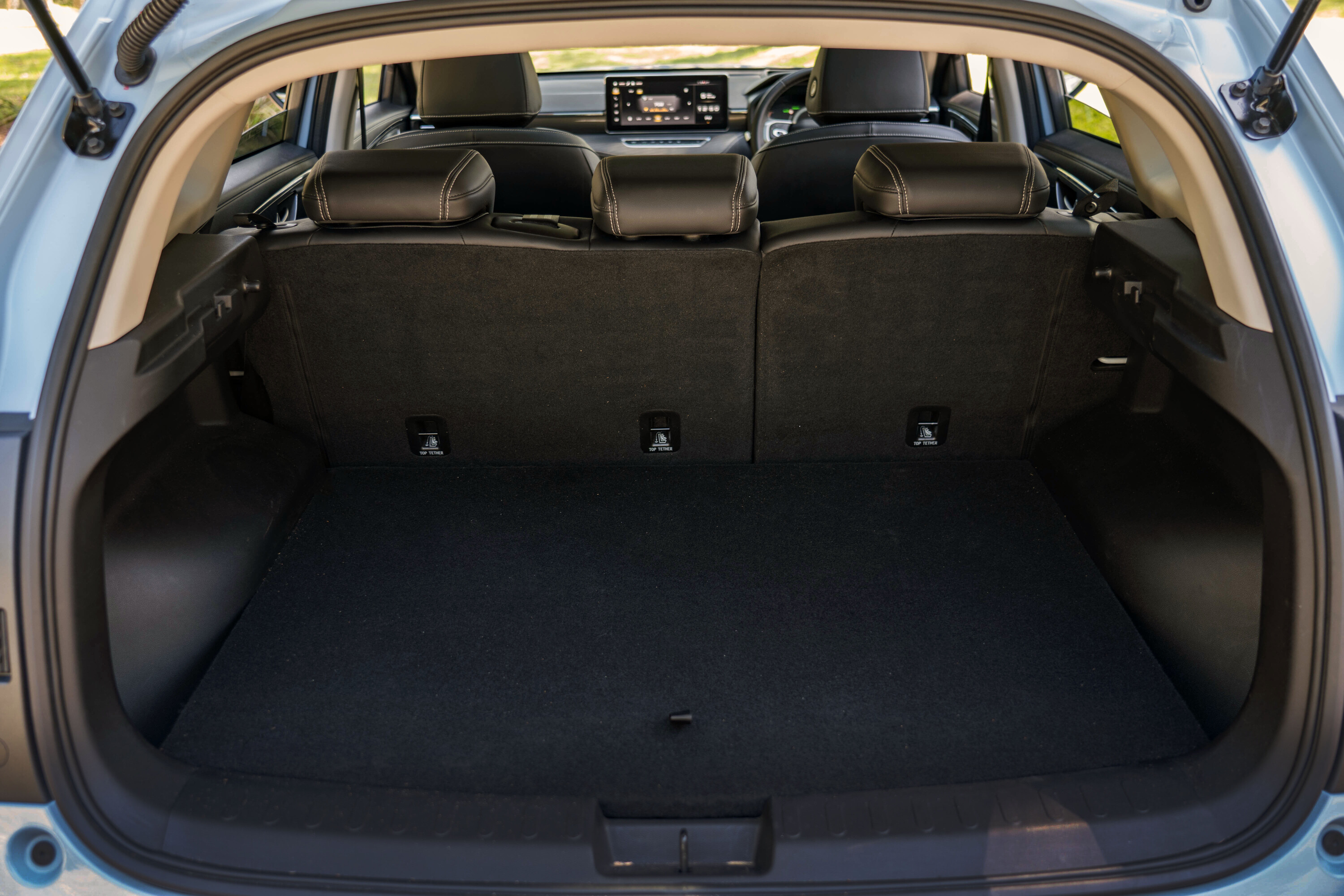
I question why the Jolion features physical shortcuts for front and rear window demisters, and air-con off – but no fan-speed adjustment when there’s a switch blank for it below the touchscreen.
On top of the dashboard, the Corolla Cross has hard, scratchy plastics where you’d really expect some yielding soft materials. Plastic quality in general is a little disappointing – it feels old Toyota – and the cabin, although brighter than a C-HR, is still a dark place to sit with a decidedly cheap canvas-like headliner.
The Corolla Cross solves many of the Corolla hatch’s back seat woes but, considering its external dimensions, the Toyota isn’t all that space efficient. A smaller car like the Skoda Kamiq does more with less.
Rear passengers are treated to adjustable air vents, a two-position reclining backrest, a fold-out armrest, two USB-C charge points, and about enough space for a 180cm person to be comfortable.
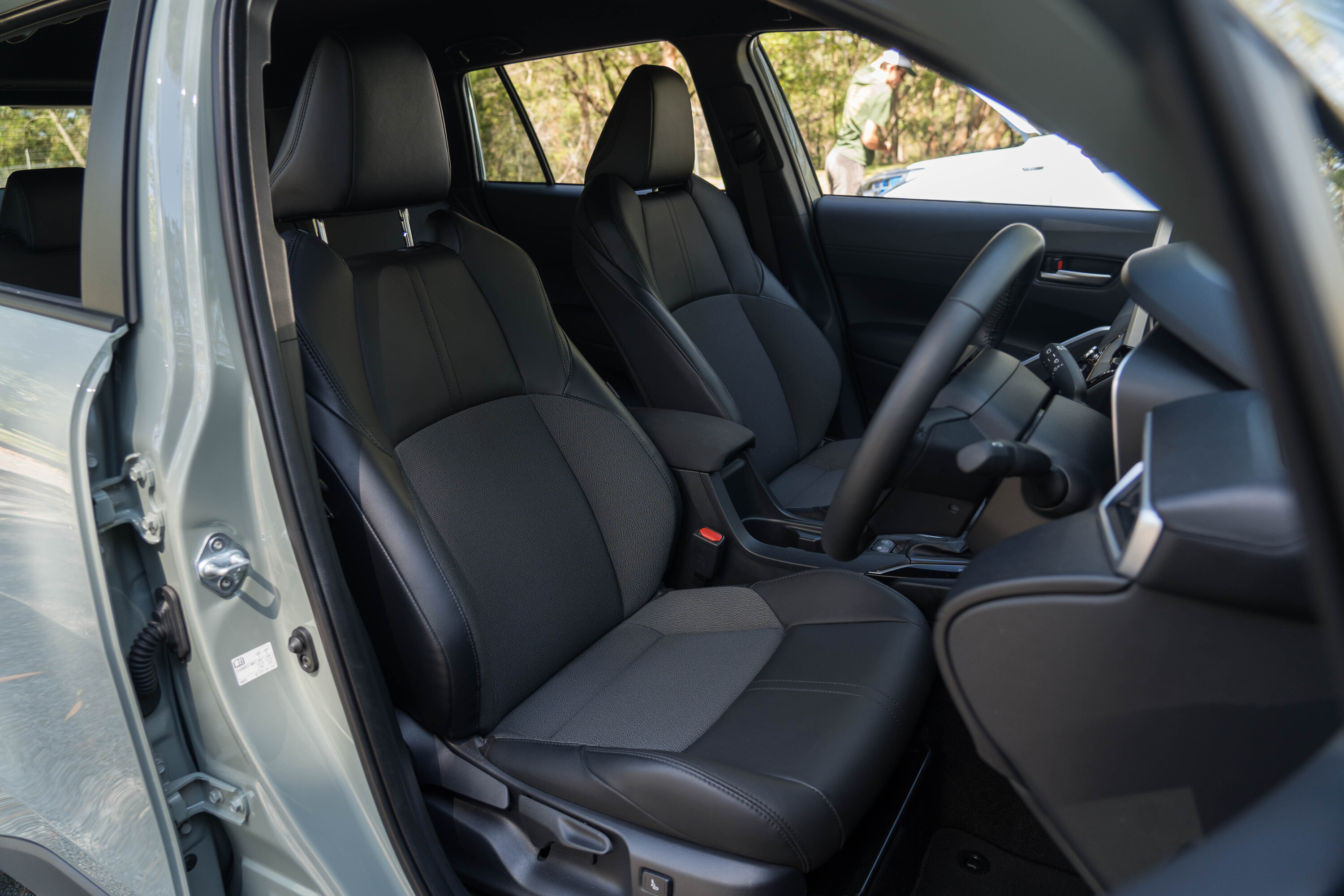
The Jolion, on the other hand, is a legitimate alternative to a size-class-larger SUV, such as a Mazda CX-5.
Although its bench is flatter and less supportive than that of the Corolla Cross, it puts occupants higher for a great stadium view forward.
Head-, leg- and toe-room are all excellent, and it matches amenities with the Corolla Cross (save for USB-A in place of C ports).
Both the Jolion Ultra hybrid and Corolla Cross GXL AWD hybrid are fitted with ISOFIX anchors on the outboard seats and feature top tether points for each position of the three-wide bench.
The Toyota Corolla Cross features a manual tailgate in GXL trim; you need to spend the extra on the flagship Atmos for a kick-to-open option. Neither boot is particularly clever, and the Haval’s is an awkward long yet shallow shape. The Jolion gets a power tailgate, though.
Both boots offer a solid 390L of space, though only the Haval gets a space-saver spare with the Corolla Cross making do with a can of goo (though front-wheel drive variants feature a spare).

On the road
In isolation, the Ultra Hybrid’s 1.5-litre four-cylinder petrol-based hybrid powertrain is pretty sophisticated.
The complexity of that DHT on paper equates to a mostly decent and hassle-free experience in the real world.
Tune in and you can notice the car swap ratios at about 85-90km/h, and under hard acceleration this can be a little jarring as the petrol engine’s soundtrack doesn’t line up with what the car’s doing.
Regenerative braking settings are buried in menus, and it’s best to have it in the maximum setting (it’s still a long way from one-pedal driving), otherwise the Jolion can feel like it’s still accelerating as you come off the gas – not a pleasant feeling. On the whole, the Jolion’s hybrid set-up delivers a far more refined experience than the petrol-only car’s jerky seven-speed dual-clutch.
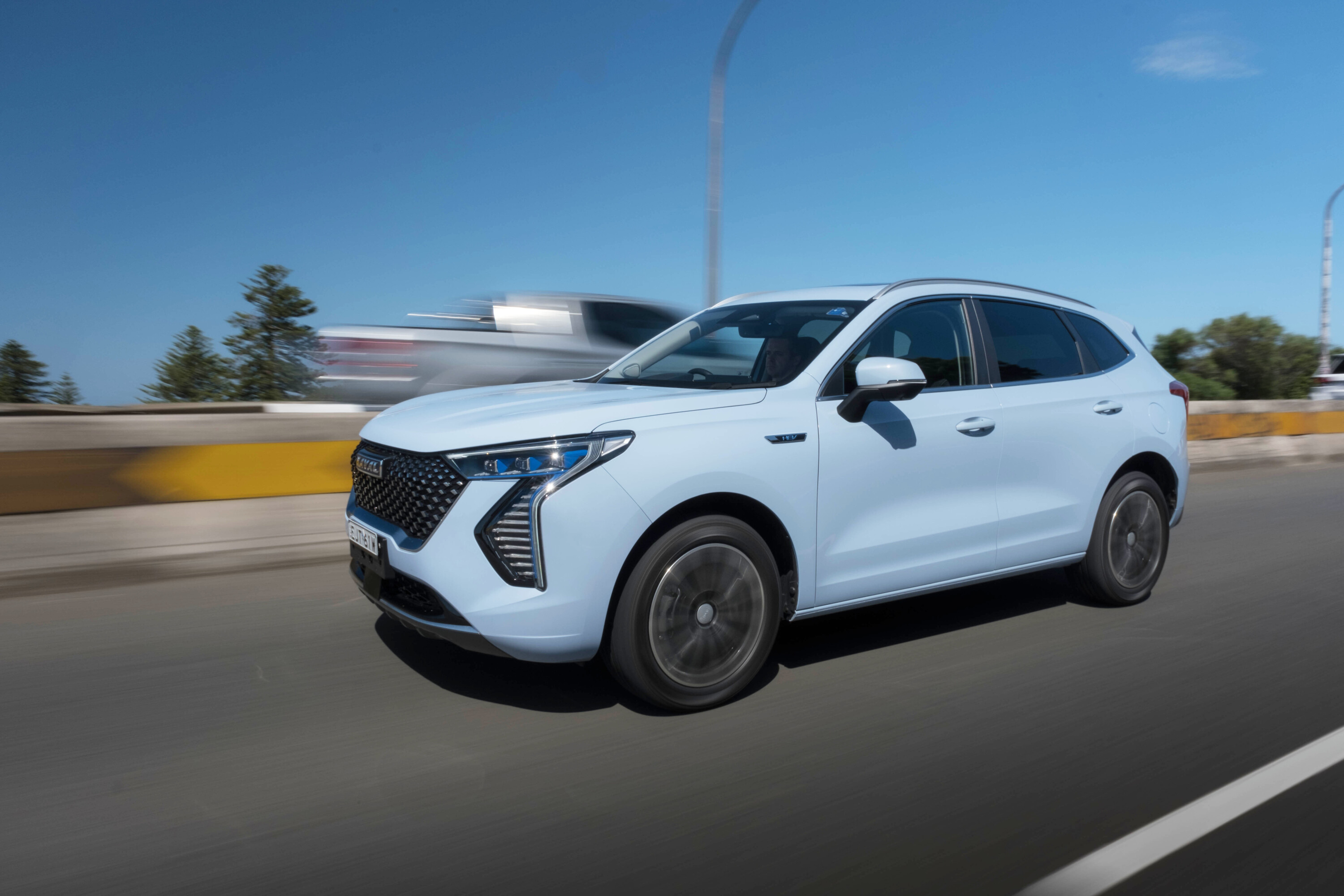
The Jolion Hybrid is plenty quick enough too; Haval lists 139kW/375Nm outputs and we have found adequate punch to spin the front wheels pulling away from junctions.
Haval doesn’t claim a 0-100km/h time, but Wheels editor Enright previously recorded an 8.9-second sprint.
With very closely aligned outputs and similar form factors, you might expect the Jolion and Corolla Cross to drive about the same… they don’t. This is where Toyota’s years of engineering experience, and a renewed focus on driving excellence, come to the fore.
A separate electric motor on the rear axle as part of the Corolla Cross GXL’s E-Four AWD system means there’s no wheelspin in the dry or wet. In this configuration the Corolla Cross is pretty rapid for a small SUV; Toyota claims 0-100km/h in 7.6 seconds.
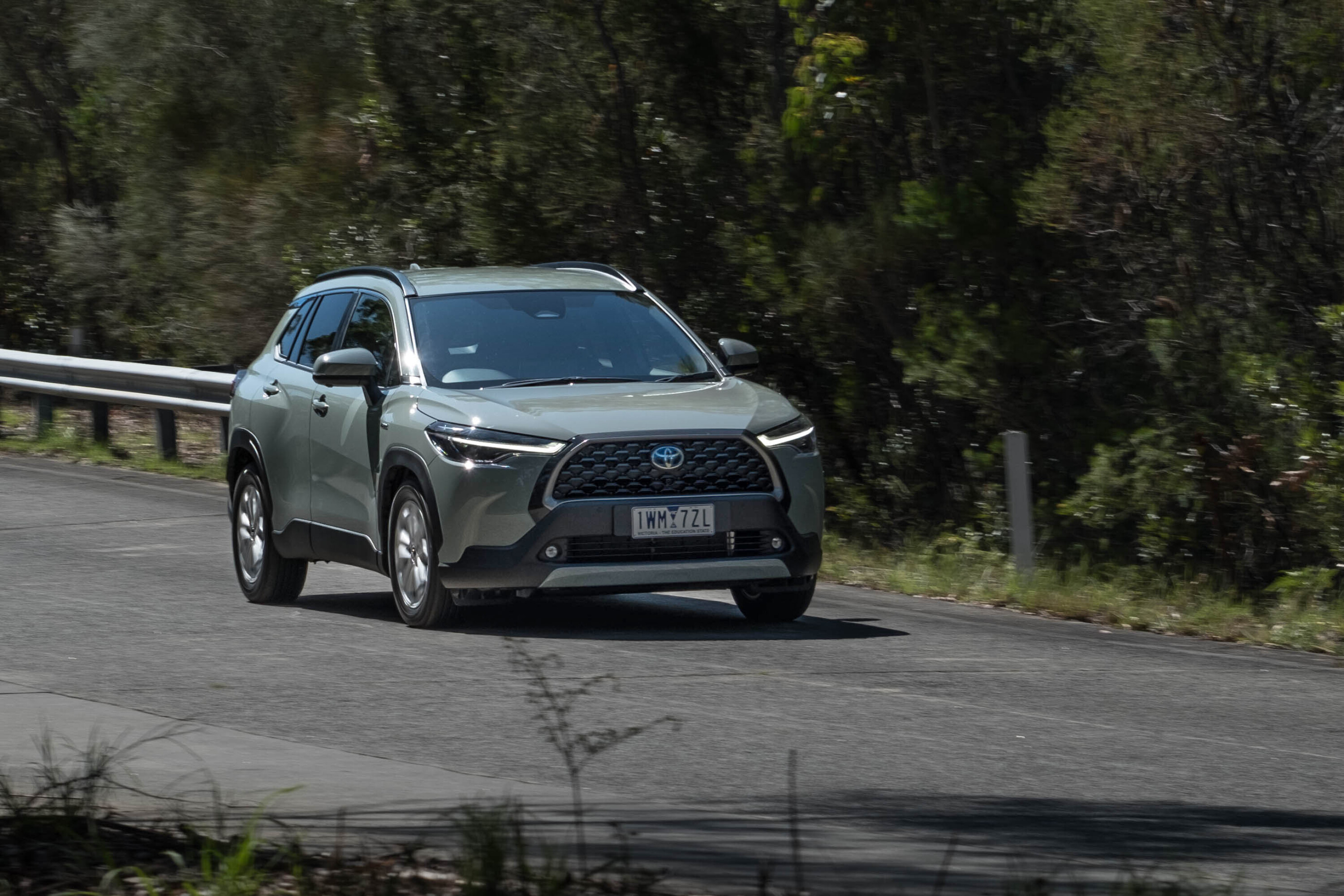
Although the Haval’s hybrid is good, Toyota’s is seamless in its operation, utilising just the right amount of EV mode with a silent start-up.
Its only problem is the vocal (under full throttle) 2.0-litre petrol four-cylinder combustion engine. The Haval’s 1.5-litre engine is a little more hushed.
In isolation, the Jolion feels absorbent enough, and its torsion beam rear end seems adequate. That is, until you get into the Corolla Cross.
Toyota’s excellence shines through on bumpy roads. The damping is silky smooth and supple by comparison, especially in the independently-suspended AWD variants. Bumps that echo into the Jolion’s cabin and throw it off line mid-corner are dispatched without fuss in the Corolla Cross.
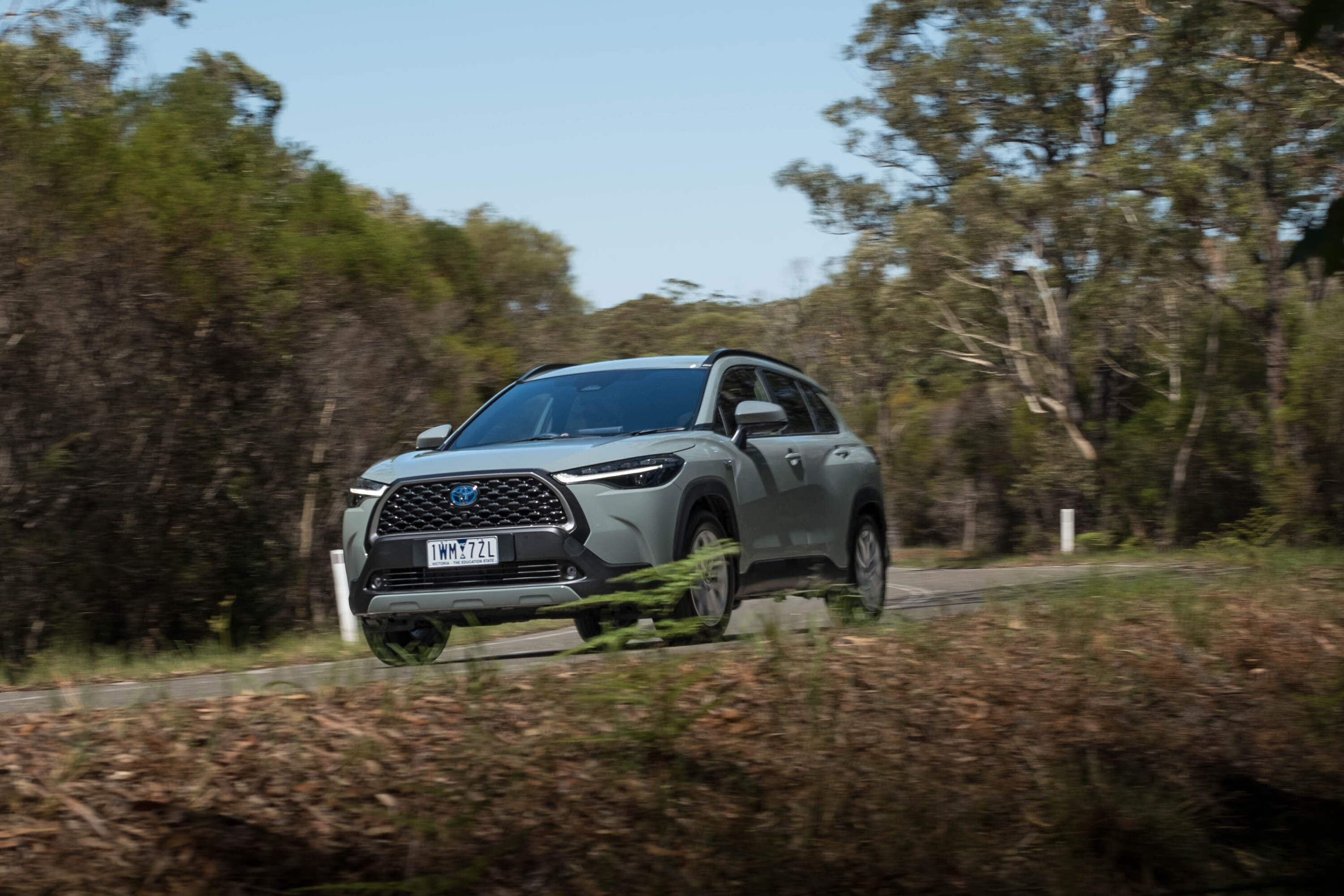
It translates to more dynamic handling, the Corolla Cross’s quick and well-weighted steering giving the confidence to push on where the Jolion’s stodgy rack erodes confidence.
The Toyota’s chassis remains light on its feet and adjustable where the Jolion clumsily understeers.
Toyota’s blending of regen and physical braking isn’t perfect (we’ve said as much in prior reviews), but it’s still preferable to the Haval’s spongy and unpredictable pedal. This kind of inconsistency pervades the whole Jolion experience, with delayed responses as though the steering and brakes are still dusty from the night before.
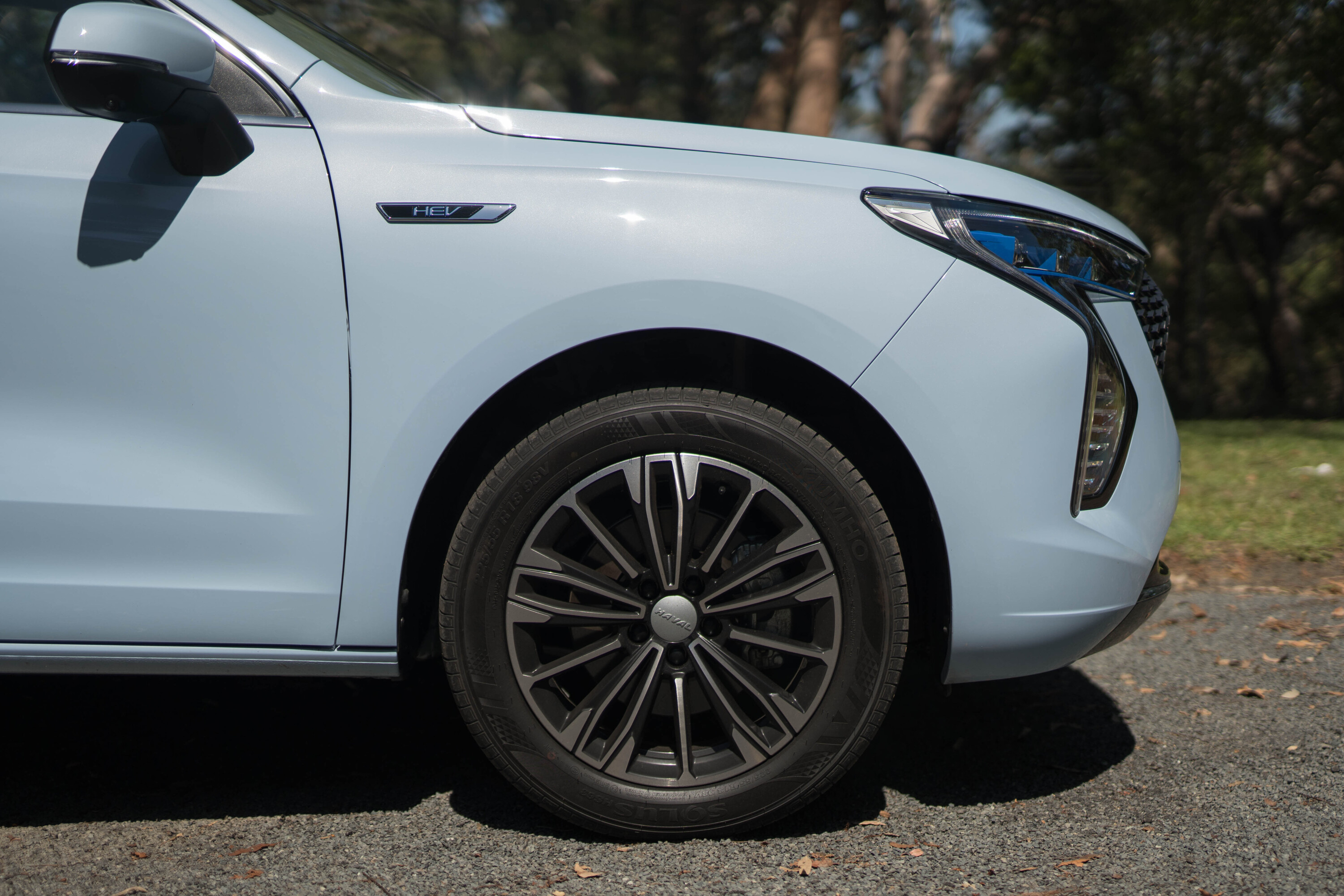
Safety
Both SUVs are matched in terms of on-paper safety criteria. By that, we mean they’re certified with five-star ANCAP ratings and equipped with all the latest safety assistance systems.
But just because they’re there, doesn’t mean they work.
Toyota’s aid calibration was, in the past, fairly conservative. The Corolla Cross’s lane-trace assist and adaptive cruise control are now more usable than before – if a way off being perfect. It’s also simple to disable the aids using mostly physical buttons.
It is a different story in the Haval Jolion. The adaptive cruise control’s speed, for example, can be set at your current velocity, but from there you can only jump around in 5km/h increments and fails to accurately maintain a selected speed – not ideal in speeding-obsessed Australia. The lane-keep assist requires further refinement including a physical button to disable the system.
| Toyota Corolla Cross GXL safety features | Haval Jolion Ultra safety features |
|---|---|
| Autonomous emergency braking (vehicle, pedestrian, cyclist, junction, reverse, motorcycle) | Autonomous emergency braking (vehicle, pedestrian, cyclist, junction, reverse) |
| Eight airbags | Seven airbags |
| Front cross-traffic alert | Rear cross-traffic alert |
| Rear cross-traffic alert | Blind-spot monitoring |
| Blind-spot monitoring | Adaptive cruise control w/stop & go |
| Adaptive cruise control w/stop & go | Lane-trace assist |
| Lane-trace assist | 360-degree camera |
| 360-degree camera | Driver monitoring |
| Driver monitoring |

Fuel consumption
In ADR combined consumption figures, the Corolla Cross GXL AWD plays its 4.4L/100km against the Jolion Hybrid’s 5.0L/100km rating.
On paper, the Corolla Cross’s hybrid ekes out a small but decent advantage, but its consistent real-world fuel efficiency cements the win.
According to the trip computer, over a two-hour loop the Corolla Cross hybrid used 5.2L/100km, 25 per cent better than the Jolion Hybrid’s 6.5L/100km figure. Both the Jolion and Corolla Cross will happily accept 91 RON regular unleaded or E10 blends at the bowser.
Ownership
Over five years, maintaining a Jolion hybrid will cost $1550. The first service is due after 12 months or 10,000km, and 12 months/15,000km thereafter.
The Corolla Cross is a little cheaper, at $250/visit for a $1250 five-year total. Toyota’s maintenance schedule is a little simpler, set every 12 months/15,000km.
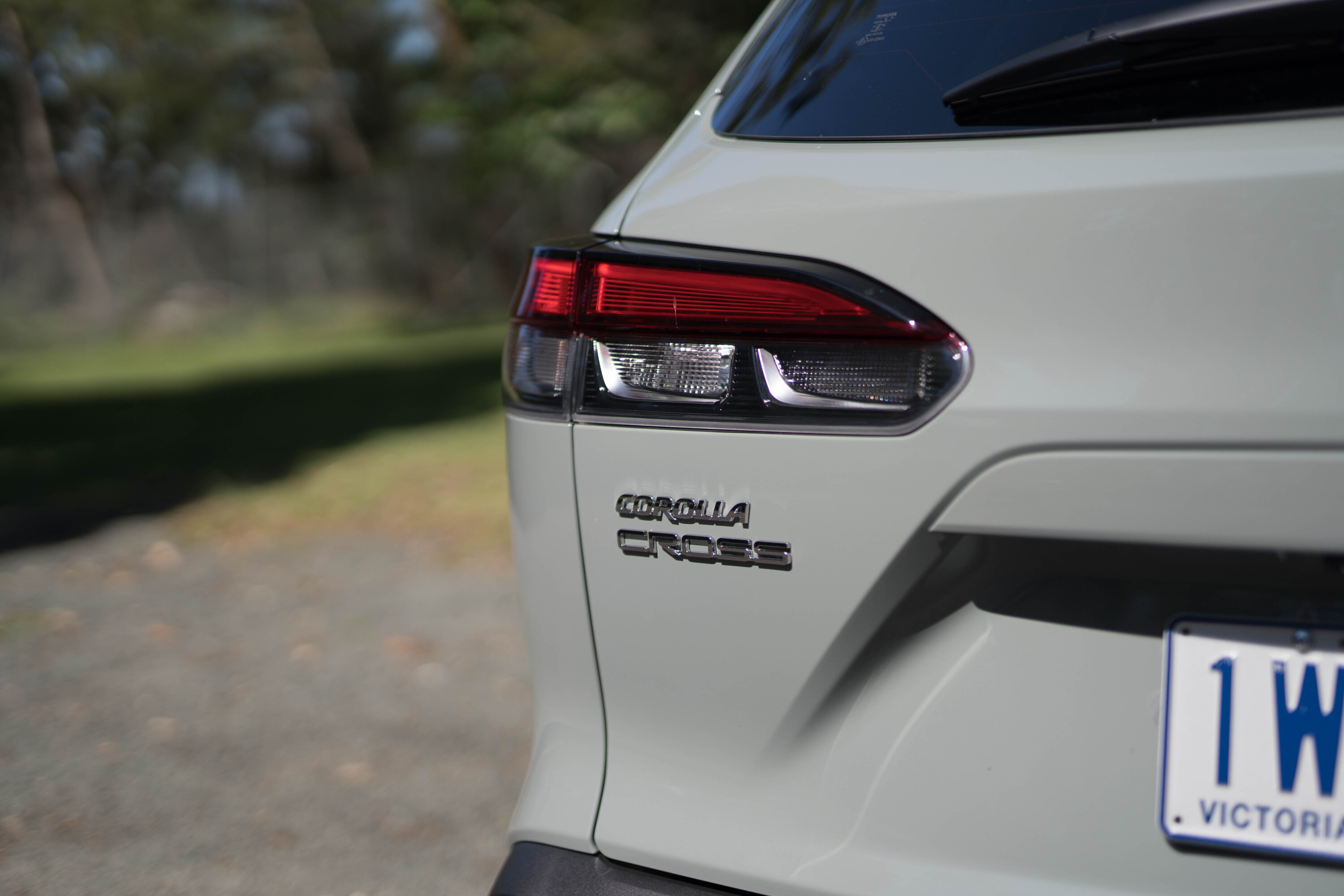
VERDICT
Judged purely on driving excellence, execution of intended function and cost of ownership, the Toyota Corolla Cross runs away with the win.
Introduce the ever-complex (and very personal) value assessment, and the result becomes muddier. The Jolion is significantly cheaper to buy, there’s no arguing there. With the Ultra boasting more kit than the Corolla Cross GXL, the value equation is strong for the Haval.
With such sharp drive-away pricing and lashings of equipment (not to mention being a small SUV that’s actually in stock), it’s easy to understand why the Jolion found nearly 1000 homes in March.
And, if $40K is your absolute limit then the Jolion Ultra Hybrid is a solid choice. It drives well enough but lacks the Toyota’s Teflon suspension action and hybrid implementation.
Even with a ritzier interior and richer specification, the Jolion’s driving dynamics still aren’t up to scratch. The Jolion Ultra Hybrid is a mid-life facelift, suspension recalibration, and user interface tweak away from winning this comparison. Today, the gong goes to the Toyota Corolla Cross.
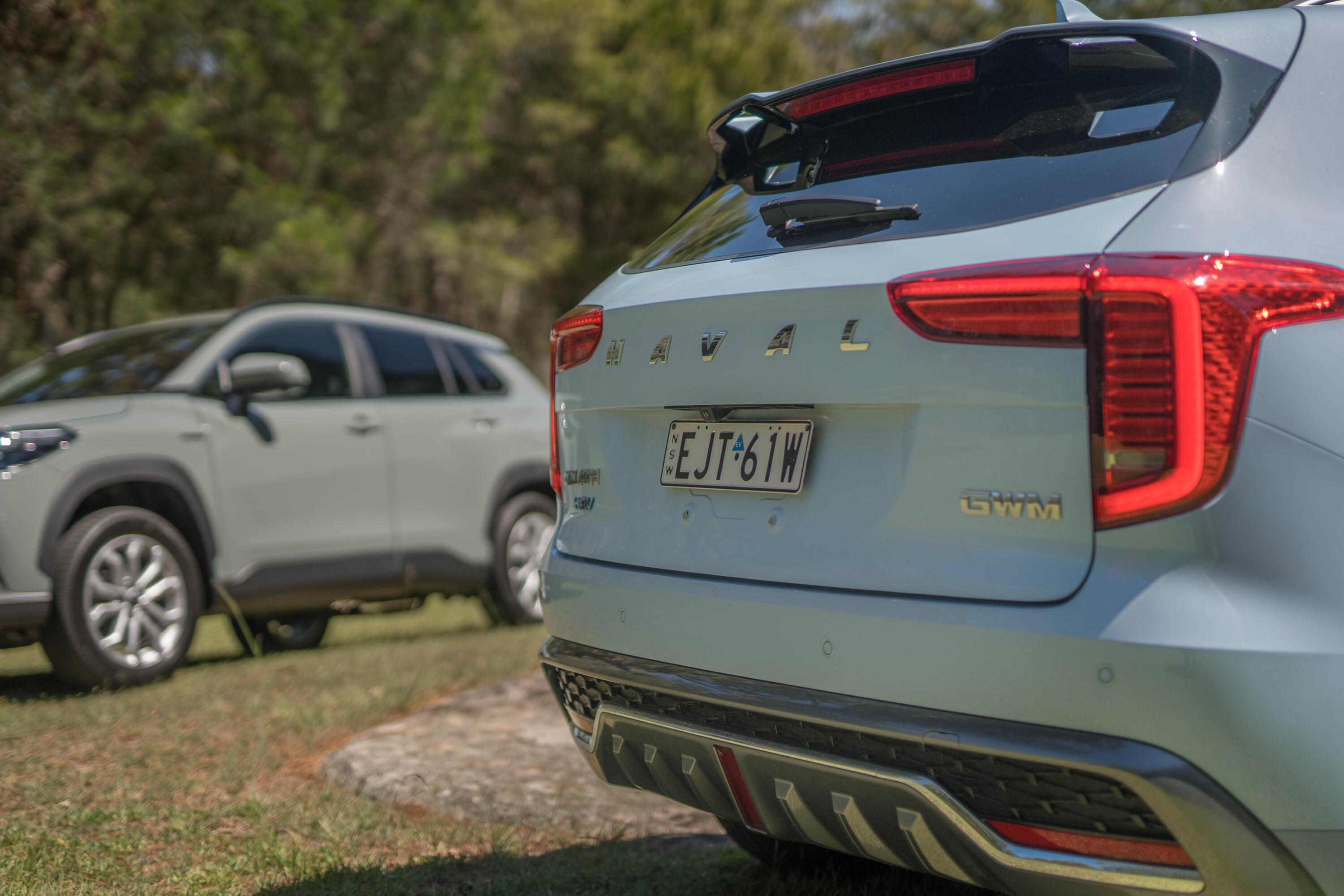
SCORING
Toyota Corolla Cross GXL AWD hybrid: 8/10
Things we like
- Supple ride
- Efficient hybrid
- Great steering
Not so much…
- Cheap cabin materials
- Expensive
- Average back seat
Haval Jolion Ultra Hybrid: 7/10
Things we like
- Low purchase price
- Spacious rear seat
- Exciting cabin design
Not so much…
- Convoluted user interface
- Mushy brake pedal
- Driving position
| Toyota Corolla Cross GXL AWD hybrid | Haval Jolion Ultra hybrid | |
|---|---|---|
| Safety, value and features | 7.5 | 8 |
| Comfort and space | 7.5 | 8.5 |
| Engine and gearbox | 8.5 | 7 |
| Ride and handling | 8.5 | 6.5 |
| Technology | 7.5 | 7 |
| OVERALL | 8 | 7 |
Specifications
| 2023 Corolla Cross GXL AWD hybrid | 2023 Haval Jolion Ultra hybrid | |
|---|---|---|
| Price | $42,250 + on-road costs | $39,990 drive-away |
| DRIVETRAIN | ||
| Engine | inline 4 cyl, 2.0-litre, DOHC, atkinson cycle petrol, 30kW rear motor | inline 4 cyl, 1.5-litre petrol, 100kW electric motor |
| Layout | front engine, transverse, FWD with electric rear motor | front engine, transverse, FWD |
| Power | 146kW | 139kW |
| Torque | NA | 375Nm |
| Gearbox | e-CVT | 2-speed u2018dedicated hybridu2019 auto |
| CHASSIS | ||
| L/W/H/Wu2013B | 4460/1825/1620/2640mm | 4472/1841/1574/2700mm |
| Track (F/R) | 1570/1580mm | NA |
| Weight (claimed) | 1545kg | 1530kg |
| Boot | 390L | 390L |
| Fuel/tank | 91 RON / 43L | 91 RON / 55L |
| Economy (tested) | 5.2L/100km | 6.5L/100km |
| Suspension | Front: struts, stabiliser bar. Rear: multi-link, stabiliser bar | Front: Struts, coil springs Rear: torsion beam |
| Steering | rack-assisted electric power steering | rack-assisted electric power steering |
| Front brakes | 305mm ventilated rotors, single-piston floating caliper | ventilated rotors, single-piston floating caliper |
| Rear brakes | 281mm solid rotors, single-piston floating caliper | solid rotors, single-piston floating calipers |
| Tyres | Bridgestone Alenza | Kumho Solus HS63 |
| Tyre size | 215/60R17 | 225/55R18 |
| SAFETY | ||
| ANCAP rating | 5 stars (2022) | 5 stars (2021) |
| 0-100km/h | 7.6 seconds (claimed) | 8.9 seconds (tested) |
Things we like
- COROLLA CROSS: Supple ride, efficient hybrid, great steering
- JOLION: Low price, spacious rear seat, exciting cabin design
Not so much
- COROLLA CROSS: Cheap cabin materials, expensive, average back seat
- JOLION: Convoluted infotainment, mushy brake pedal, driving position
We recommend
-
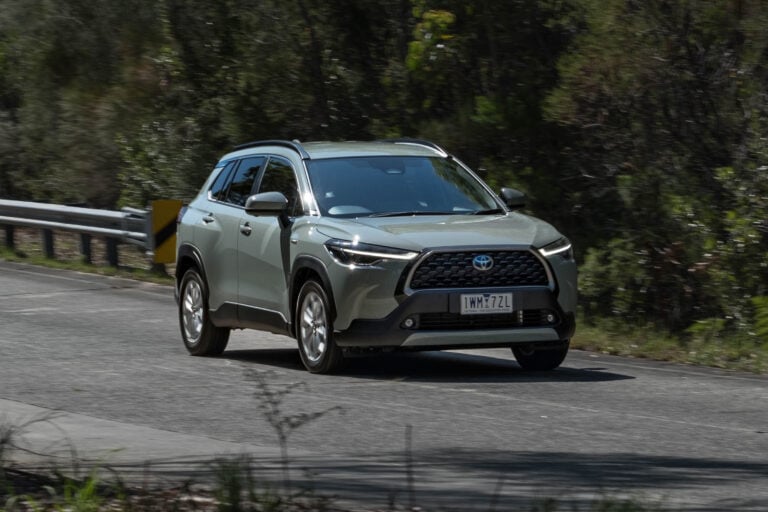 Reviews
Reviews2023 Corolla Cross GXL Hybrid AWD review
Mid-spec 'E-Four' (all-wheel drive) Corolla Cross should be the pick of the bunch but the price premium over a front-drive one might put you off
-
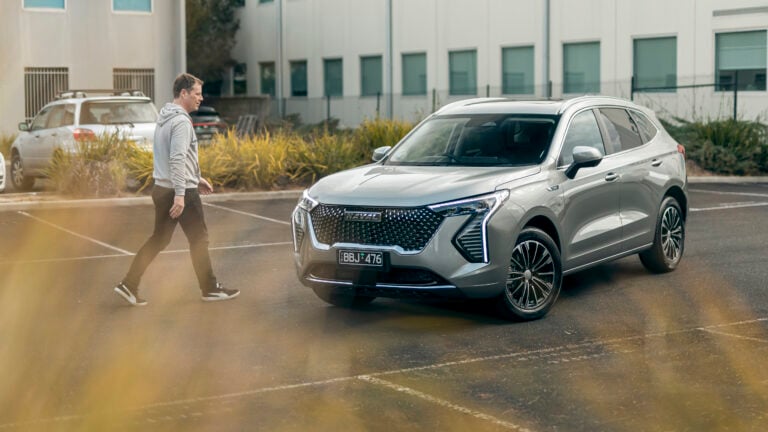 Reviews
Reviews2023 GWM Haval Jolion Ultra Hybrid review
Affordable hybrid SUVs are still fairly thin on the ground. Does GWM's Haval Jolion Hybrid carve a viable niche?
-
 News
NewsNew car calendar 2026: All the new cars coming to Australia next year
Here’s the WhichCar by Wheels guide to all the new cars that will launch in Australia in 2026. Check back in regularly for updates...




